Have you ever wondered about the fascinating past of Camiguin Island? From its early mentions by Spanish and Portuguese chroniclers to the arrival of Spanish conquistador Don Miguel Lopez de Legazpi, this island in the Philippines holds a rich historical legacy waiting to be explored.
Key Takeaways:
- The history of Camiguin Island dates back to its early references by Spanish and Portuguese chroniclers.
- Spanish conquistador Don Miguel Lopez de Legazpi played a significant role in the island’s development.
- The Jesuits and Augustinians contributed to the cultural and religious growth of Camiguin Island.
- Guinsiliban is the oldest town on the island, while Catarman was once a major settlement.
- Camiguin Island is known for its rich history and cultural heritage.
Volcanic Origins of Camiguin Island
Camiguin Island, located in the Philippines, is renowned for its spectacular volcanic origins. Often referred to as the “island born of fire,” it boasts a captivating landscape shaped by volcanic activity throughout history. This fiery heritage has given rise to numerous enchanting attractions and landmarks that draw visitors from around the world.
Mountains of Fire
Camiguin Island is home to several volcanoes, the most notable being Mount Hibok-Hibok and Mount Vulcan. These majestic peaks offer breathtaking views and thrilling hiking opportunities for adventure enthusiasts. Mount Hibok-Hibok, an active stratovolcano, stands as a testament to the island’s volcanic nature and attracts trekkers seeking an adrenaline-filled experience.
A Landmarked Legacy
The volcanic activity of Camiguin Island has not only shaped its terrain but also bestowed it with unique landmarks and attractions that showcase the island’s natural beauty and geological wonders.
Perhaps the most iconic landmark is the Sunken Cemetery. When Mount Vulcan erupted in 1871, it caused significant devastation, submerging the cemetery beneath the sea. Today, the remains of the cemetery’s cross serve as a solemn reminder of the island’s volcanic history. The Sunken Cemetery has become a symbol of Camiguin Island and a popular site for snorkeling and diving.
In addition to the Sunken Cemetery, Camiguin Island boasts other volcanic attractions such as natural hot springs and the Old Volcano Trail. The hot springs offer both relaxation and therapeutic benefits, allowing visitors to soak in the warm, mineral-rich waters amidst serene surroundings. The Old Volcano Trail, on the other hand, presents adventurous hikers with an exhilarating journey through the remnants of past eruptions.
An Extraordinary Palette
The volcanic origins of Camiguin Island have also influenced its natural surroundings, resulting in captivating landscapes and breathtaking vistas. The contrasting colors of black volcanic rocks, lush greenery, and turquoise waters create a picturesque scenery that captures the essence of the island’s unique identity.
The volcanic origins of Camiguin Island have endowed it with a remarkable beauty that sets it apart. From its iconic landmarks to its awe-inspiring scenery, the island continues to captivate visitors with its fiery legacy.
Early Spanish Influence on Camiguin Island
The Spanish played a crucial role in shaping the history and culture of Camiguin Island. With the arrival of Spanish conquistador Don Miguel Lopez de Legazpi in 1565, the island became a center of Spanish colonization in the Philippines. The influx of Spanish influence led to the establishment of missions and the founding of towns, including Guinsiliban, Catarman, and Mambajao.
The Jesuits and Augustinians, religious orders from Spain, played a significant role in the island’s development. They built churches, schools, and other infrastructure, laying the foundation for the island’s cultural and religious heritage. Today, remnants of the Spanish colonial period can still be seen on Camiguin Island, with old churches and historical sites dotting its landscape.
One of the notable historical sites is the Santo Rosario Church in Sagay, which dates back to the Spanish era. It stands as a testament to the enduring legacy of Spanish architecture and religious influence on the island.
The Spanish colonial period also brought trade and commerce to Camiguin Island. The towns established by the Spanish became centers of economic activity, facilitating trade between the island and other parts of the Philippines. The Spanish influence is still evident in the local culture and traditions of Camiguin, adding depth and richness to its heritage.
Exploring the historical sites and landmarks is a must when visiting Camiguin Island. It offers a glimpse into the island’s past and the enduring legacy of Spanish influence. Visitors can wander through the centuries-old churches, marvel at the architectural details, and appreciate the cultural significance of these historical sites.
Spanish Historical Sites on Camiguin Island:
| Name | Location | Description |
|---|---|---|
| Santo Rosario Church | Sagay | A Spanish colonial-era church with beautiful architecture and religious significance. |
| San Nicolas de Tolentino Church | Catarman | A historic church that was reconstructed after being destroyed by volcanic eruptions. |
| Sto. Niño Cold Spring | Catarman | A natural spring believed to have been blessed by Spanish friars, providing a refreshing experience for visitors. |
Immerse yourself in the history and heritage of Camiguin Island by visiting these Spanish historical sites. They offer a glimpse into the island’s past and the enduring influence of the Spanish colonial period. Explore the churches, admire the architecture, and appreciate the cultural significance of these landmarks.
Camiguin Island During the American Period
The American period marked a significant transformation for Camiguin Island as it became part of the Philippines when the country was under American rule. This era brought about notable advancements in infrastructure, education, and healthcare on the island, shaping its development for years to come.
The American influence can still be seen today, particularly in the architectural style of some buildings on Camiguin Island. A blend of American and local design elements gives these structures a unique charm that showcases the island’s cultural diversity.
During the American period, Camiguin Island also emerged as a popular tourist destination, attracting visitors with its natural beauty and historical sites. Tourists were captivated by the island’s pristine beaches, lush forests, and captivating landscapes. The combination of breathtaking scenery and a rich historical past made Camiguin Island a must-visit location for travelers looking to immerse themselves in its unique charm.
“Camiguin Island offers a fascinating blend of scenic beauty and historical significance. From the enchanting White Island to the intriguing Old Church Ruins in Catarman, visitors are treated to a remarkable experience.”– Travel Enthusiast Magazine
As tourism flourished, Camiguin Island’s delightful attractions, such as its captivating waterfalls and therapeutic hot springs, gained recognition worldwide. Visitors were captivated by the island’s natural wonders, making it a sought-after destination for those seeking relaxation and adventure.
Today, Camiguin Island stands as a testament to the enduring legacy of the American period. Its rich history, combined with its role as a tourist hotspot, makes it a captivating destination that continues to leave a lasting impression on all who visit.
Cultural Treasures of Camiguin Island
Camiguin Island is not only known for its natural beauty but also for its rich cultural heritage. With its diverse indigenous groups and their unique traditions and customs, the island is a treasure trove of cultural experiences.
One of the highlights of Camiguin’s cultural calendar is the Lanzones Festival, held annually in October. This vibrant celebration pays homage to the island’s culture and the abundance of lanzones fruit. During the festival, the streets come alive with colorful street dancing and other cultural performances, showcasing the talents and creativity of the locals.
Aside from the Lanzones Festival, Camiguin Island boasts a wide range of cultural treasures. The island is known for its traditional crafts, such as handmade clay pots, woven baskets, and intricately designed accessories. These crafts reflect the artistry and craftsmanship of the local communities, preserving age-old techniques passed down through generations.
Music is also an integral part of Camiguin’s cultural heritage. The island is home to various traditional music ensembles, showcasing unique musical styles and instruments. Visitors can immerse themselves in the melodic rhythms of bamboo instruments like the kulintang and the guimbae.
Moreover, Camiguin Island is a delight for food enthusiasts, offering a culinary journey through its local delicacies. From freshly caught seafood dishes like kinilaw (ceviche) to scrumptious lanzones treats like pastillas and tarts, the island’s cuisine tantalizes the taste buds and offers a glimpse into the local traditions and flavors.
Immerse Yourself in the Cultural Treasures of Camiguin Island
“The cultural richness of Camiguin Island is a testament to the vibrancy and resilience of its communities. From the spirited performances during the Lanzones Festival to the intricate craftsmanship and unique musical traditions, the island’s cultural treasures offer a glimpse into its captivating heritage.”
– Local Resident
Exploring the cultural treasures of Camiguin Island is a must for any visitor. Take the time to visit local museums, artisans’ shops, and cultural centers where you can learn more about the island’s cultural heritage and interact with the local community.
By engaging with the island’s cultural treasures, you not only support the preservation of traditional practices and craftsmanship but also gain a deeper appreciation for the rich tapestry of Camiguin’s history and culture.
Experience the Lanzones Festival
The Lanzones Festival is an incredible opportunity to experience the vibrant culture of Camiguin Island. Immerse yourself in the festivities and witness the joy and pride of the locals as they celebrate their cultural heritage.
Join in the street dancing, be captivated by the elaborate costumes and performances, and savor the taste of the iconic lanzones fruit, which takes center stage during this festive celebration.
Don’t miss the chance to witness the cultural showcase that the Lanzones Festival offers, as it is an experience that will leave a lasting impression and create cherished memories of your time on Camiguin Island.
Whether you’re exploring the traditional crafts, enjoying the vibrant music, or indulging in the island’s culinary delights, Camiguin Island’s cultural treasures will leave you with a deeper understanding of its rich heritage and an appreciation for the diverse cultural tapestry that defines this enchanting destination.
Historical Sites and Landmarks on Camiguin Island
Camiguin Island is a treasure trove of historical sites and landmarks that provide glimpses into its vibrant past. Exploring these cultural gems allows visitors to immerse themselves in the island’s captivating history and appreciate its rich heritage. From the remnants of ancient churches to fascinating architectural structures, Camiguin Island offers a fascinating journey through time.
The Guiob Church: Old Church Ruins
One of the most prominent historical attractions on Camiguin Island is the Guiob Church, also known as the Old Church Ruins. This iconic landmark stands as a poignant reminder of the island’s volcanic history. Destroyed during the eruption of Mount Vulcan in 1871, the ruins now fascinate visitors with their haunting beauty. The crumbling walls and weathered facade of the Guiob Church serve as a testament to the island’s resilience and its people’s unwavering spirit.
Cross Marker in Catarman
Another significant historical site on Camiguin Island is the Cross Marker in Catarman. This solemn monument symbolizes the island’s strong religious roots. It stands on the site where the old Spanish church was buried by volcanic debris during the eruption of Mount Vulcan. The Cross Marker serves as a poignant reminder of Camiguin’s past and the indomitable faith of its people.
Spanish Watchtower in Guinsiliban
For a glimpse into the island’s defensive heritage, the Spanish Watchtower in Guinsiliban is a must-visit. This architectural marvel once served as a lookout point, enabling the Spanish colonizers to monitor and protect the island from potential threats. The watchtower’s strategic location provides a panoramic view of the surrounding landscapes, making it an ideal spot for visitors to soak in the island’s natural beauty while appreciating its historical significance.
Exploring these historical sites and landmarks on Camiguin Island is a captivating journey through time. Whether it’s marveling at the haunting beauty of the Guiob Church ruins, reflecting at the Cross Marker in Catarman, or admiring the architectural feat of the Spanish Watchtower in Guinsiliban, each visit offers a unique opportunity to connect with the island’s storied past. Embark on this historical odyssey and uncover the intriguing tales that have shaped the identity of Camiguin Island.
Camiguin Island’s Natural Wonders
Camiguin Island is a destination filled with natural wonders that attract tourists from all over the world. One of the main draws of the island is its breathtaking beaches and crystal-clear waters, providing a true paradise for beach lovers. With its stunning coastline, Camiguin Island offers numerous attractions for visitors to enjoy.
“Camiguin Island’s beaches are some of the most beautiful in the Philippines. The pristine white sand and calm turquoise waters make it an ideal spot for swimming, sunbathing, and snorkeling.”
The White Island: A Tropical Paradise
No trip to Camiguin Island is complete without a visit to the famous White Island, a picturesque sandbar located just off the coast of Mambajao. This secluded destination offers breathtaking views of the surrounding seascape, with powdery white sand and crystal-clear waters as far as the eye can see. It’s a perfect spot for swimming, snorkeling, or simply enjoying the serene beauty of nature. The White Island is accessible via boat ride from Mambajao, and a day trip will leave you with unforgettable memories.
Waterfalls, Hot Springs, and Lush Forests
Camiguin Island is not just about its amazing beaches; it also boasts incredible natural attractions inland. From majestic waterfalls to soothing hot springs and lush forests, the island offers a variety of experiences for nature enthusiasts. Don’t miss the chance to visit attractions like Katibawasan Falls, known for its impressive 250-foot cascade, and Tuasan Falls, a hidden gem tucked away in the heart of nature. For those seeking relaxation, the Ardent Hot Spring is the perfect place to soak in the therapeutic waters and unwind after a day of exploration.
“Exploring the waterfalls and hot springs of Camiguin Island is like stepping into paradise. The tranquil surroundings and the soothing sounds of nature create a truly magical experience.”
With its diverse range of natural wonders, Camiguin Island has become a popular destination for eco-tourism and nature enthusiasts. Whether you’re hiking through the lush forests, swimming in the clear waters, or admiring the breathtaking waterfalls, you’ll find yourself surrounded by the untouched beauty of the island.
| Attraction | Description |
|---|---|
| White Island | A pristine sandbar off the coast of Mambajao, offering stunning panoramic views and great snorkeling opportunities. |
| Katibawasan Falls | A majestic waterfall with a height of 250 feet, surrounded by lush greenery. |
| Tuasan Falls | A hidden gem nestled in the heart of nature, featuring a series of cascading waterfalls and natural pools. |
| Ardent Hot Spring | A soothing hot spring with therapeutic waters, perfect for relaxation and unwinding. |
Camiguin Island’s natural wonders offer a refreshing escape from the hustle and bustle of city life. Whether you’re a beach enthusiast, nature lover, or adventure seeker, this tropical paradise has something to offer everyone.
Exploring the Cuisine of Camiguin Island
The cuisine of Camiguin Island embodies the island’s cultural diversity and abundance of natural resources. One cannot fully experience the essence of Camiguin without savoring its unique culinary offerings. The island’s proximity to the sea ensures a plentiful supply of fresh seafood, taking center stage in many traditional dishes.
Seafood enthusiasts will delight in the variety of seafood available on Camiguin Island. From succulent grilled squid to flavorful seafood sinigang, the island’s restaurants and eateries offer a wide array of seafood delicacies that cater to all palates. One cannot miss the opportunity to indulge in kinilaw, a local version of ceviche, where fresh seafood is marinated in a tangy mixture of vinegar, lime juice, and spices.
Aside from its bountiful seafood, Camiguin Island is renowned for its lanzones fruit. Lanzones, with its sweet and delicate flavor, is a fruit that thrives in the island’s fertile soil. It is a staple in the local cuisine and is incorporated into various dishes and desserts.
A visit to Camiguin Island would not be complete without sampling lanzones delicacies such as pastillas and tarts. Lanzones pastillas, made from condensed milk and wrapped in colorful cellophane, offer a sweet treat to satisfy any craving. Lanzones tarts, on the other hand, showcase the fruit’s natural sweetness combined with a buttery pastry crust.
Exploring the local cuisine of Camiguin Island is not only a gastronomic adventure but also a cultural experience. Through the flavors and tastes of the island, visitors can gain insight into the traditions, heritage, and way of life of its people. Embrace the culinary journey and discover the unique dishes that reflect the cultural richness of Camiguin Island.
With its distinct cuisine intertwined with the island’s cultural heritage, Camiguin Island offers a gastronomic experience that is truly one of a kind. From delectable seafood creations to the delightful sweetness of lanzones delicacies, the island’s culinary treasures are sure to tantalize taste buds and leave lasting memories.
Traveling to Camiguin Island: Tips and Restrictions
Planning a trip to Camiguin Island? Here are some essential tips and restrictions to keep in mind for a smooth and enjoyable experience.
- Check travel advisories: Before making any arrangements, it’s crucial to stay updated on the current travel restrictions and guidelines for Camiguin Island. Check with the local authorities or visit the official tourism website for the latest information.
- Book in advance: Camiguin Island is a popular tourist destination, especially during peak seasons. To avoid any inconvenience, it’s advisable to book accommodations and transportation in advance. This way, you’ll have more options and secure your preferred arrangements.
- Explore off-peak seasons: If you prefer a more relaxed and less crowded experience, consider visiting Camiguin Island during off-peak seasons. You’ll have the chance to enjoy the island’s attractions without the hustle and bustle of peak tourist periods.
- Respect local customs and traditions: When visiting Camiguin Island, be mindful of the local customs and traditions. Show respect for the island’s heritage and culture, and engage with the locals in a friendly and courteous manner.
- Follow environmental guidelines: Camiguin Island is known for its pristine beauty. Help preserve the environment by following the designated trails, disposing of waste responsibly, and respecting the natural habitats of the island’s flora and fauna.
These tips and restrictions will ensure that your trip to Camiguin Island is hassle-free, respectful, and aligned with responsible tourism practices.
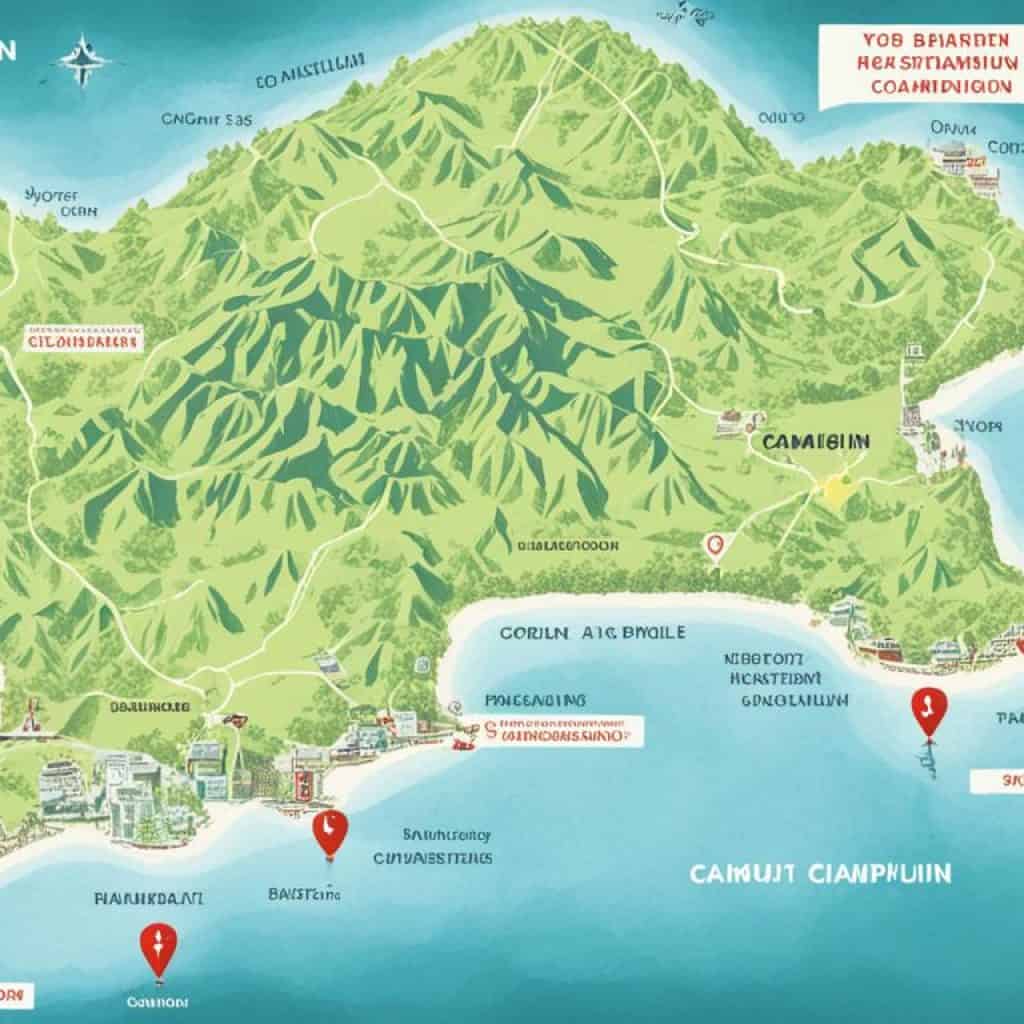
Travel Advisory: COVID-19
In light of the ongoing COVID-19 pandemic, it’s essential to stay informed about any travel restrictions or requirements related to the virus. Check the local health department’s guidelines and any specific measures implemented for tourists visiting Camiguin Island. Remember to follow all health and safety protocols such as wearing face masks, practicing social distancing, and maintaining good hygiene throughout your trip.
Preserving Camiguin Island’s Heritage
Preserving Camiguin Island’s heritage is crucial to maintaining its cultural identity and attracting visitors. The island’s rich history and diverse cultural practices make it a unique destination worth exploring. Local government and cultural stakeholders have a significant role to play in conserving historical sites, traditions, and cultural treasures. By valuing and preserving Camiguin Island’s heritage, future generations can continue to appreciate its rich history and cultural diversity.
Efforts should be made to promote sustainable tourism that respects and preserves the island’s cultural heritage. Engaging the local community in the preservation process is essential as they hold valuable knowledge and traditions that need to be passed down. Supporting local artisans, craftsmen, and cultural practitioners can also ensure the continuity of traditional practices.
One way to raise awareness about Camiguin Island’s heritage is through educational programs and cultural events. Workshops, exhibitions, and festivals can showcase the island’s traditions, music, dance, and cuisine, providing visitors with a deeper understanding of the local culture. Such initiatives can also encourage dialogue and appreciation for Camiguin Island’s unique heritage.
“Camiguin Island’s heritage is an invaluable resource that must be protected and celebrated. By preserving our cultural identity, we can create a sustainable future that respects our past.”
– Local Cultural Stakeholder
The preservation of Camiguin Island’s heritage is not only important for its cultural and historical significance but also for the economic growth of the island. By protecting and promoting its unique heritage, Camiguin can attract tourists who appreciate authenticity and cultural experiences. This, in turn, can contribute to the local economy and the well-being of the community.
Preserving Camiguin Island’s heritage requires a collective effort, involving the government, local community, and visitors alike. By recognizing the value of cultural heritage and actively participating in its preservation, we can ensure that Camiguin Island’s rich history and cultural diversity continue to thrive for generations to come.
Camiguin Island: A Hidden Gem in the Philippines
Camiguin Island may be lesser-known compared to other popular tourist destinations in the Philippines, but it is truly a hidden gem. Its volcanic origins, rich history, natural wonders, and cultural treasures make it a unique and unforgettable destination.
Located in the Bohol Sea, Camiguin Island is a paradise for beach enthusiasts, history buffs, and nature lovers alike. The island boasts pristine beaches with crystal-clear waters, providing the perfect setting for relaxation and water activities. White Island, a stunning sandbar off the coast of Mambajao, offers breathtaking views and is a popular spot for swimming and snorkeling.
But Camiguin Island is not just about its beautiful beaches. It is also steeped in history and cultural heritage. Take a step back in time as you explore the island’s historical sites and landmarks. The Old Church Ruins in Catarman, a solemn reminder of the island’s volcanic past, and the Cross Marker in Catarman are must-visit sites for history enthusiasts.
The island is also home to natural wonders that will leave you in awe. Immerse yourself in nature as you visit the enchanting Katibawasan Falls and Tuasan Falls, where you can take a refreshing dip and marvel at the beauty of cascading water. The island is also dotted with hot springs, offering a unique opportunity to relax and rejuvenate in natural thermal waters.
“Camiguin Island is a hidden gem that showcases the best of both natural and cultural attractions in the Philippines. With its volcanic landscapes, pristine beaches, and rich history, it offers a diverse range of experiences for travelers seeking an off-the-beaten-path destination.”
No visit to Camiguin Island is complete without indulging in its local cuisine. Sample delicious seafood dishes such as grilled squid and seafood sinigang, or savor the sweet and succulent lanzones, a fruit for which the island is famous. Don’t miss the chance to try lanzones pastillas and tarts, local delicacies that will tantalize your taste buds.
Camiguin Island’s charm lies in its authenticity and untouched beauty. As you explore the island, you’ll find yourself immersed in a rich tapestry of natural wonders, historical sites, and warm hospitality. Experience the magic of Camiguin Island and create memories that will last a lifetime.
Top Attractions in Camiguin Island
| Attraction | Description |
|---|---|
| White Island | A picturesque sandbar with crystal-clear waters, perfect for swimming and snorkeling. |
| Old Church Ruins | Ruins of an old church destroyed by the eruption of Mount Vulcan, showcasing the island’s volcanic history. |
| Katibawasan Falls | A majestic waterfall surrounded by lush greenery, perfect for nature lovers. |
| Tuasan Falls | A series of cascading waterfalls, offering a refreshing escape in nature. |
| Hot Springs | Natural thermal pools where you can soak and unwind. |
Planning Your Visit to Camiguin Island
Planning a visit to Camiguin Island requires careful consideration of various factors. To make the most of your trip, it is important to plan ahead and gather all the necessary information. Here are some tips to help you plan a memorable and enjoyable visit.
1. Choose the Right Time
It is advisable to choose a time of the year when the weather is favorable and the tourist crowds are manageable. Camiguin Island offers pleasant tropical weather throughout the year, but it is best to avoid the rainy season, which typically occurs from June to December.
2. Research Accommodations and Transportation
Researching accommodations and transportation options beforehand will ensure a smooth trip. Camiguin Island offers a range of accommodations, from budget-friendly guesthouses to luxurious resorts. Consider your preferences and budget while selecting the right place to stay.
When it comes to transportation, you can reach Camiguin Island by air or sea. There are regular flights from Manila and Cebu, as well as ferry services from nearby ports. Book your transportation tickets in advance to secure the best options and prices.
3. Create an Itinerary
To make the most of your time on Camiguin Island, it is recommended to create an itinerary that includes a mix of historical sites, natural attractions, and cultural experiences. Some must-visit attractions include the Sunken Cemetery, White Island, Ardent Hot Springs, and Katibawasan Falls. Consider hiring a local guide who can provide insights into the island’s history and culture.
4. Respect the Local Culture and Environment
As a responsible traveler, it is essential to respect the local culture and environment. Follow any rules and regulations set by the local authorities, especially in protected areas. Be mindful of the impact your actions may have on the delicate ecosystems of the island.
“Camiguin Island offers a range of accommodations, from budget-friendly guesthouses to luxurious resorts.”
By following these tips and planning ahead, your visit to Camiguin Island will be a memorable and enjoyable experience. Take the time to explore the island’s natural beauty, immerse yourself in its rich history, and interact with the friendly locals. Get ready for an unforgettable adventure in this hidden gem of the Philippines!
| Attractions | Recommended Duration |
|---|---|
| Sunken Cemetery | 1-2 hours |
| White Island | Half-day |
| Ardent Hot Springs | 2-3 hours |
| Katibawasan Falls | 1-2 hours |
| Guiob Church Ruins | 1-2 hours |
Exploring Camiguin Island: Insider Tips and Recommendations
Exploring Camiguin Island is an exciting adventure, and there are some insider tips and recommendations to enhance your experience. Don’t miss the opportunity to visit the Sunken Cemetery, White Island, and the Old Church Ruins in Catarman. These attractions showcase the island’s rich history and provide stunning views of the surrounding landscapes. Immerse yourself in the fascinating stories of the past while enjoying the natural beauty of Camiguin Island.
When you’re ready for a refreshing dip, make sure to visit the island’s hot springs and waterfalls. Katibawasan Falls and Tuasan Falls offer a peaceful and picturesque setting where you can relax and rejuvenate amidst nature’s beauty. The cascading waters and lush green surroundings will leave you in awe of Camiguin Island’s natural wonders.
Engaging with the locals is a great way to learn about the customs and traditions of Camiguin Island. Strike up a conversation with the friendly residents and discover their unique way of life. You may even have the opportunity to witness traditional dances, music, and festivals that celebrate the island’s cultural heritage.
No visit to Camiguin Island is complete without indulging in the local delicacies. Try the lanzones pastillas, a sweet treat made from the island’s famous lanzones fruit. You can also savor a variety of seafood dishes, such as grilled squid or seafood sinigang, which showcase the island’s bountiful coastal resources.
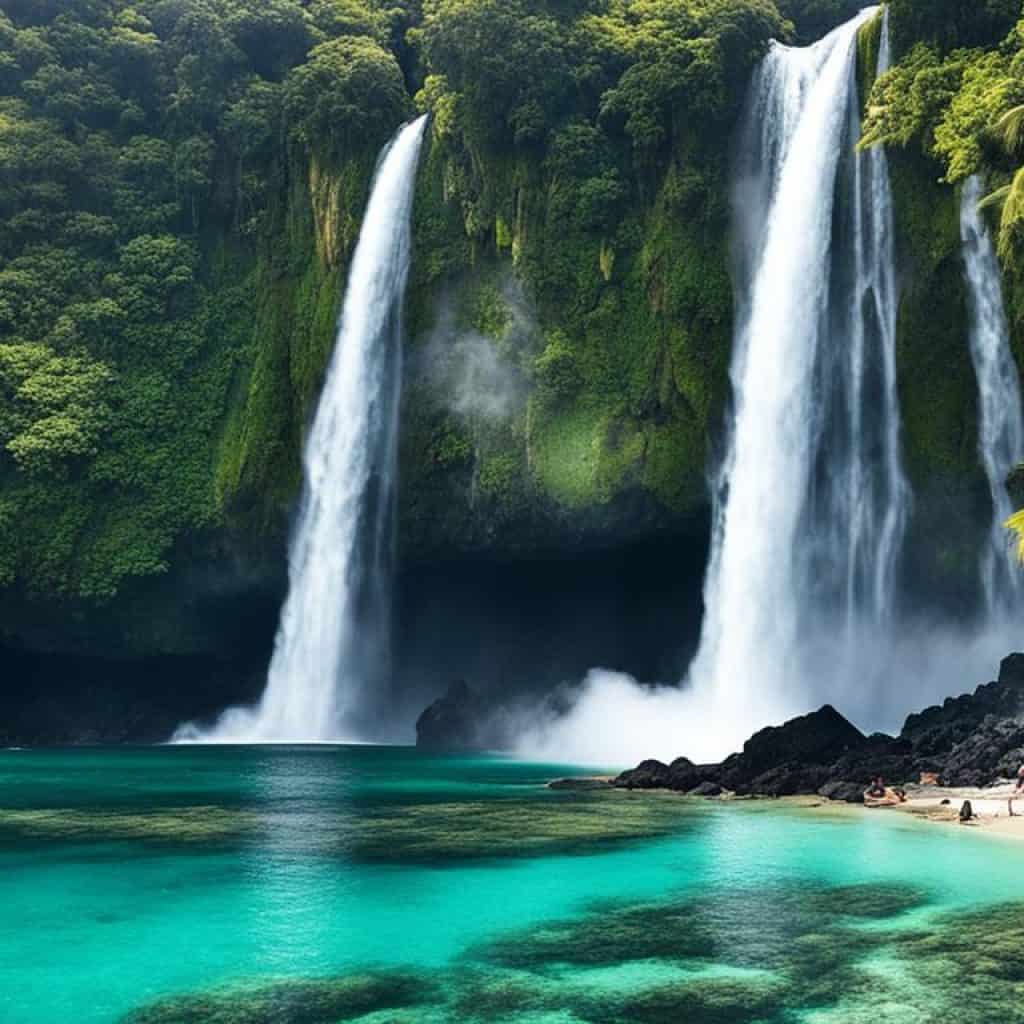
With these insider tips and recommendations, your visit to Camiguin Island will be truly special. Immerse yourself in the island’s history, marvel at its natural beauty, and indulge in its unique culture and cuisine. Camiguin Island is waiting to be explored and cherished by adventurous souls like you.
Conclusion
Camiguin Island is a hidden gem that combines rich history, natural beauty, and cultural heritage. With its volcanic origins, influenced by the Spanish colonization and the American period, the island offers a unique blend of attractions and experiences. From exploring historic sites and landmarks to relaxing on pristine beaches and marveling at magnificent waterfalls, Camiguin Island has something for every traveler.
Preserving the island’s heritage and promoting sustainable tourism is key to maintaining its charm and allure. By valuing and protecting its historical sites, traditions, and cultural practices, Camiguin Island can continue to captivate visitors and share its fascinating past. Whether you’re interested in delving into the island’s history, immersing yourself in its natural wonders, or indulging in its local cuisine, Camiguin Island promises an unforgettable journey.
Plan your visit to Camiguin Island today to uncover its hidden treasures. Dive into the history, bask in the beauty of its landscapes, and engage with the warm and hospitable locals. Camiguin Island welcomes you with open arms, ready to share its rich history, breathtaking attractions, and vibrant culture.
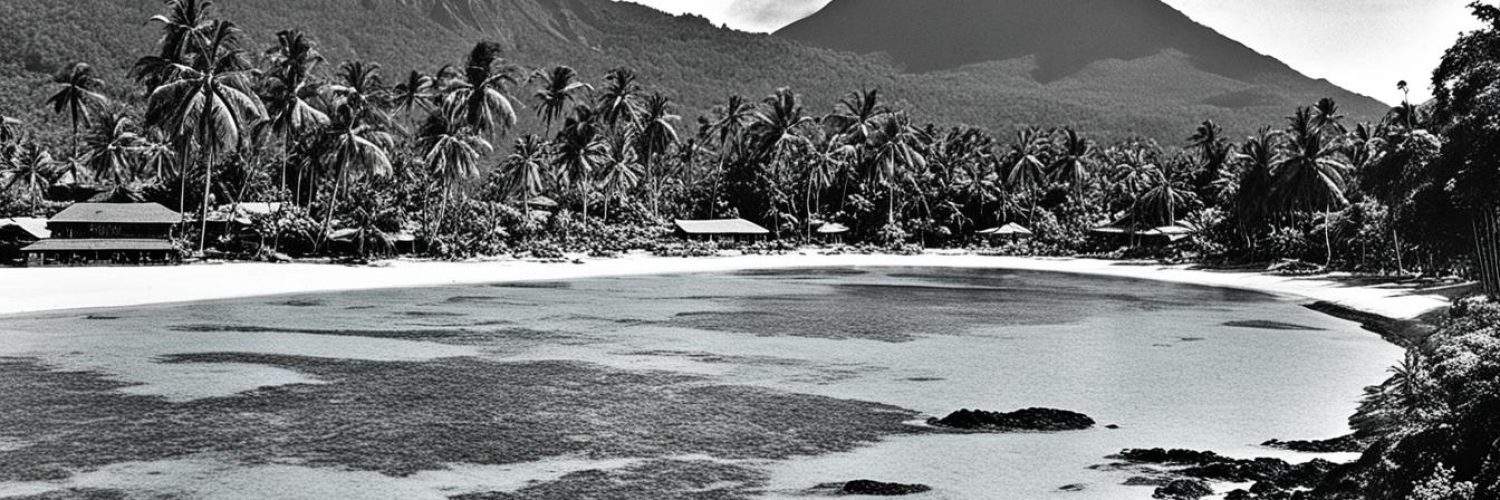
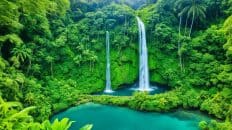
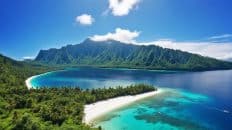















Add comment